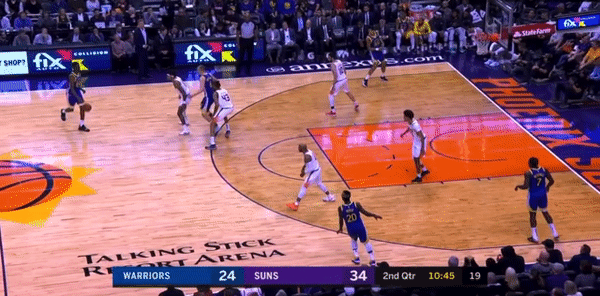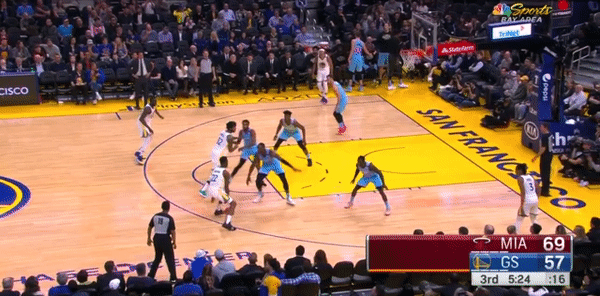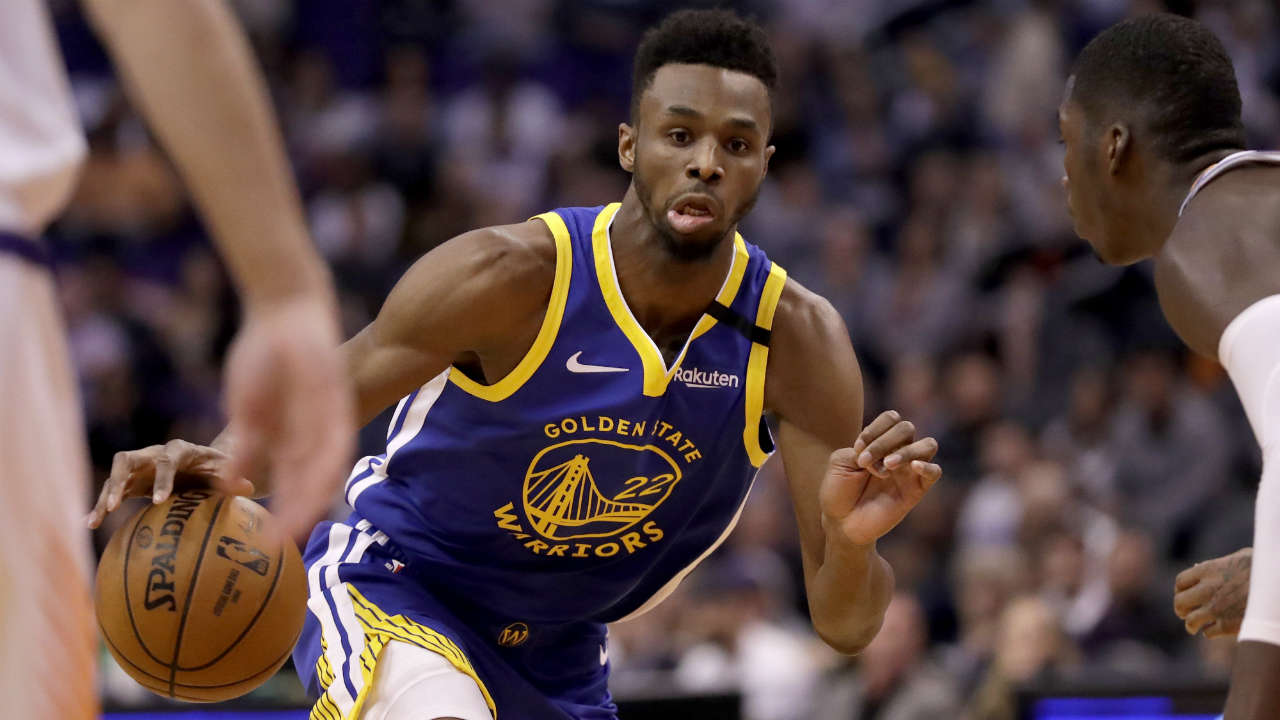When it comes to being a No. 1 overall draft pick, players live a large portion — if not the entirety — of their professional careers in an uncomfortable bubble.
Such is the case for Andrew Wiggins, who went first-overall in the 2014 NBA Draft and has been deemed a bust (perhaps the most dreaded of sports labels) from time to time – a victim of the immense pressure and fuss made over him when he was but a high schooler at Huntington Prep.
Wiggins’ fall from perceived grace was so drastic that when he was acquired by the Golden State Warriors at the trade deadline for D’Angelo Russell, it was the draft compensation — not Wiggins — that was at the centre of the deal.
But through the minuscule three-game sample he’s played in yellow-and-blue, it seems Wiggins may prove to benefit from a change of scenery and in so doing force an adjustment of expectations when it comes to discussing his career and value as a player.
[snippet id=4763101]
While the Timberwolves have only recently moved into the realm of modern basketball (they are taking 39.7 threes per game this season as opposed to 28.7 last season, for example), the Warriors spawned it and, therefore, epitomize it. Where Ryan Saunders’ offence functions around his key players creating plays on-ball, Kerr’s motion offence prioritizes passing and cutting and relocating, making it far more about the whole than any individual piece, no matter how great they may be.
It should come as no surprise, then, that Wiggins has been on the ball less. In Minnesota, he sported a 27.6 usage percentage, a number that’s dropped to 23.8 in Golden State and is sure to continue to decrease next season when Stephen Curry and Klay Thompson return.
And yet, despite touching the ball less, Wiggins’ impact on the Warriors has been greater than at any point with the Timberwolves. He has been more efficient across the board thanks to buying in to what the offence offers him: More opportunities to cut, a different sort of spacing, easier looks and more assisted shots.
As a result, the Warriors have been a ridiculous 43.3 points per 100 possessions better with him on the floor.
When Wiggins was in Minnesota, the fact that he was on the ball so much meant that he had few opportunities to cut. But he was always great at it – this season, despite cutting at a frequency rate of only 5.6 per cent, Wiggins has generated 1.53 points per possessions on those plays, good enough to place him in the league’s 88th percentile.
Now with the Warriors, who cut at a 7.8 per cent frequency rate (sixth-highest in the league) as opposed to the Timberwolves’ 6.2 per cent rate (tied for 16th), he’ll have the opportunity to utilize that skill to its fullest potential.

Here, Wiggins waits on the weak side of the floor while Draymond Green comes to screen his man. The latter does a poor job of it, but Wiggins is so quick that he stops on a dime and zips behind Devin Booker to hurtle towards the rim. Green receives the ball from Damion Lee and immediately fires it to the cutting Wiggins, who now simply has to wait for the help man to fly by before rising to flush a dunk.
When engaged, one of the things Wiggins has always been best at is driving and finishing inside due to his explosive athleticism. This season in Minnesota, Wiggins drove 14.7 times a game, by far the most on the team, and took 7.4 of his overall 18.8 shots out of those drives, converting on 48.6 per cent of them. With Golden State, he’s driving 8.7 times a game, taking just 2.7 of his overall 13.3 attempts out of them, and converting a staggering 62.5 per cent.

The Warriors’ offence incentivizes Wiggins to pick his spots carefully when he does decide to drive, and so far it’s led to him scoring nearly every time he heads to the rim. Here, in an on-ball example, he notices an open lane to the basket and immediately rejects the screen set by Alen Smailagić, launching himself into the paint, rocketing past Jevon Carter, who came over to help, and taking advantage of the fact that Cameron Johnson is caught in no-man’s land.
It’s not quite Morey-ball, but the Warriors’ offence certainly has helped Wiggins cut down on some bad habits and prioritize higher value shots. The most significant alteration comes in the mid-range, where Wiggins was taking 10.1 per cent of his shots in Minnesota and is now taking just 2.5 per cent of them in Golden State. He’s taken those shots and spread them to more serviceable areas, such as the paint and three-point range.

The damage he’s done from that 3-10 foot zone since the trade has been particularly notable, as he’s shot 55.6 per cent in that range as opposed to the 45.6 per cent he shot with the Timberwolves. Here, after receiving the ball back at the top of the arc, he surges forward and splits two fantastic defenders in Jimmy Butler and Bam Adebayo before lofting a sort of push-floater with his left hand that nestles right into the mesh.
Wiggins’ improvement from deep with the Warriors is also not simply due to the offence asking him to take more – like with the paint shots, it’s due to the offence giving him better, easier looks. While the Canadian took 3.6 catch-and-shoot threes out of his total 6.5 triples and hit 36 per cent of them with the Timberwolves, he’s taken four catch-and-shoots out of his total five triples and drained 50 per cent of them with the Warriors. The difference in percentages comes from the sheer difference in how many of those looks have been assisted – in Minnesota, 73.6 per cent of Wiggins’ threes were assisted, while in Golden State 100 per cent of his treys have been assisted.
Rather than taking pull-up triples or waiting patiently at the arc for the ball to come to him, Wiggins receives more off-ball screens with Golden State than he’s ever had before, and these free him up to pop out to the perimeter for open shots.

Here, Wiggins is one of two Warriors who set simultaneous down screens for their teammates, freeing them up to fly to the perimeter to receive a potential pass from the inbounding Lee. The first option on the strong side whips by, then the second comes across the paint where Green sets a screen to delay his man before continuing on and setting yet another screen in order to free up Wiggins from his spot down low, allowing him to zoom up the middle of the floor and catch the ball for an open triple.
Three games is a tiny sample size. This stretch isn’t necessarily an indication of the future, but it could be, and that’s as positive a sign as one could hope for. Throw in the fact that Wiggins has yet to spend a prolonged period of time with Kerr, his current teammates, or the city itself, and won’t even get the opportunity to fully test out his new, less intensive role until Curry and Thompson are back on the floor, and optimism abounds.
Expectations are typically a catalyst for either a smidgen of delight or, more often than not, an abundance of disappointment. Perhaps the best version of Wiggins lies in wait in San Francisco, unhindered by the voices of the past.
Only time will tell, but one thing’s for certain: This go-round, there will be no monumentally weighty expectations to live up to.
All stats courtesy of NBA.com and basketball-reference.com.
[relatedlinks]









